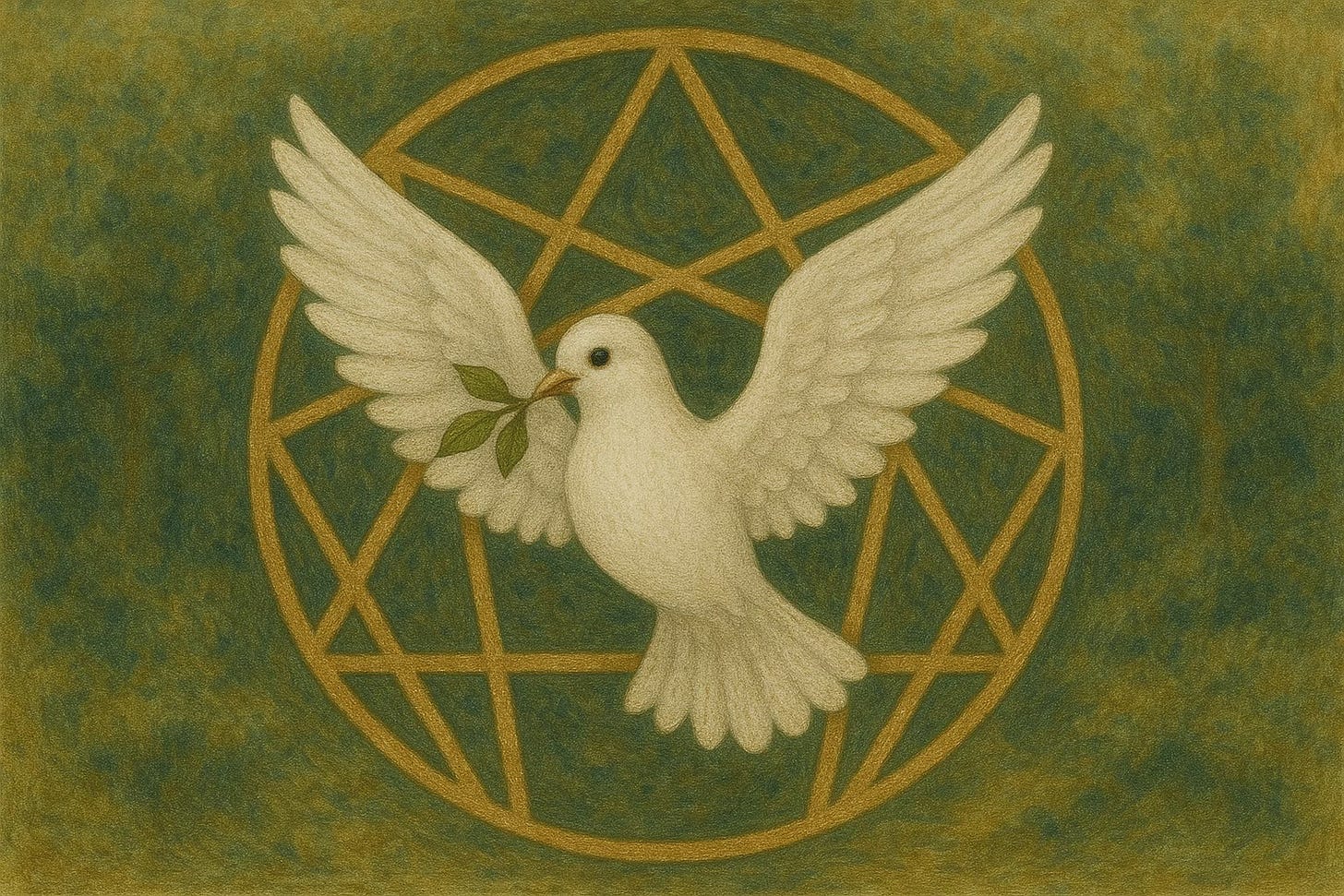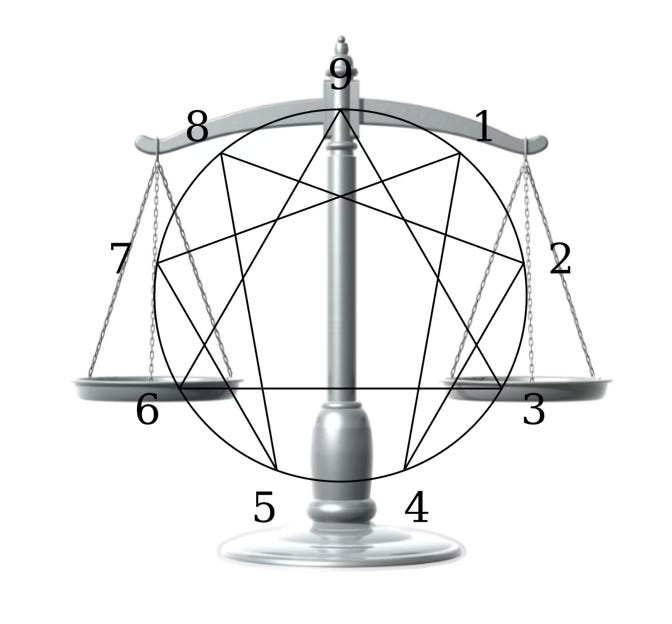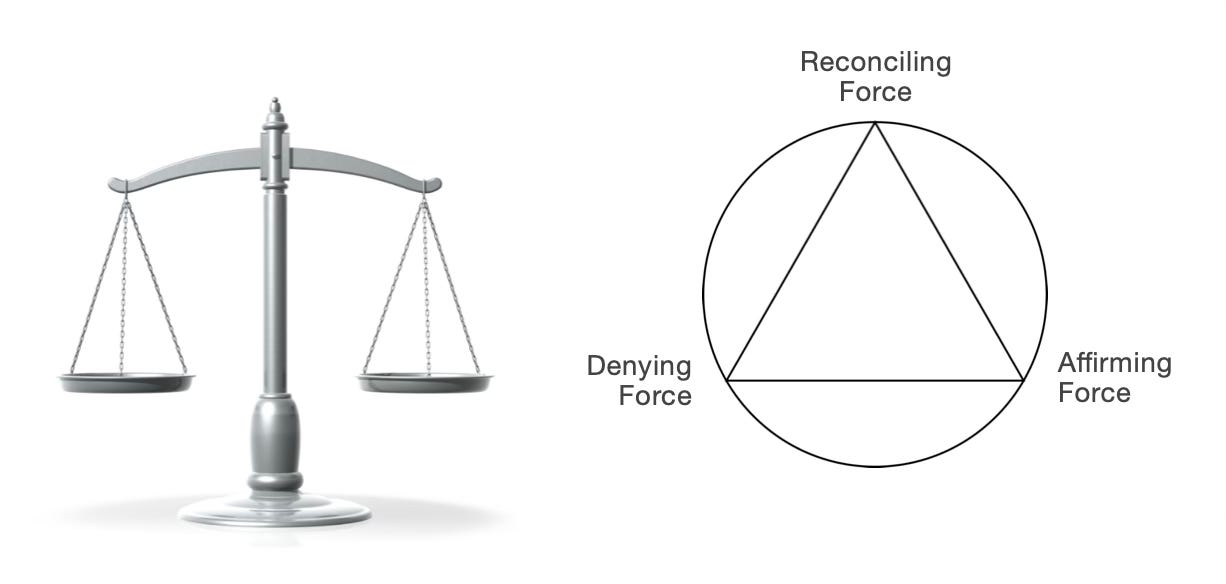Philharmony and the Wisdom of Balance
The Enneagram for Peace: Rediscovering Harmony as Sacred Balance
We live in an age of increasing polarisation. Political divisions are antagonistic, war and civilian atrocities are being live-streamed into our homes, and our relationship with the natural world has become so toxic that we've destabilised six out of nine planetary boundaries required for Earth's healthy functioning1.
In the face of such these challenges, how can the Enneagram signpost us towards peace?
On this World Enneagram Day2, with its theme of Enneagram for Peace, let’s explore peace through the idea of philharmony, a love of sacred balance. On the Enneagram symbol, the harmony point sits at Point Nine – associated appropriately with love and peace – it’s the point of dynamic equilibrium that holds the entire system in balance. We can call Nine the Peace Point.
The Ancient Understanding of Harmony
In previous posts I’ve expressed my view that our modern world operates on a fundamentally flawed premise. As I explored in The Law of Balance, "the fundamental problem is that our culture tells us that humanity is in competition with nature. We consider nature as something to be 'conquered' rather than what it really is: our only life-support system in outer space."
This competitive, exploitation mindset has led us catastrophically astray. We've forgotten what wiser civilisations once understood: that real security doesn’t come from plundering nature, but instead from living in alignment with the universal Laws of Nature.
Long before Pythagoras articulated the term ‘philosophy’ – a love of wisdom – the ancient Egyptians revered what I’m calling philharmony, a love of harmony. This was a deep respect for the dynamic equilibrium that holds all things in right relationship with cosmic order: the rhythms of nature, the seasons in their cycles, the human body in homeostasis, and the state in stability.
The Egyptians called this principle Ma'at. As I wrote in Out of Balance, Out of Time, ma'at was "not a philosophical concept but a lived reality, a field of sacred reciprocity within which everything found its proper place." In life the pharaoh’s primary role was to maintain ma’at, and in death a person’s soul was judged on how their heart weighed against the feather of Ma'at, based on the integrity of their actions. To an Egyptian, being ‘lighthearted’ or ‘heavyhearted’ resulted in either eternal life or annihilation.
Nine: The Peace Point
Point Nine occupies a unique position on the Enneagram symbol: vertically, it's the highest point, and horizontally, it's the only point that's placed centrally. This positioning reveals Point Nine's fundamental role as the fulcrum of the entire Enneagram system, the upper pivot where stillness enables the movement of the system, and from which equilibrium is maintained.
Think of Point Nine as the pivot point of a pair of scales. Without this point of stability, the dynamic forces represented by the other eight points would pull each other into disarray, tipping the whole system into chaos. So Nine is the unifying force that holds the other energies together, creating a coherent and dynamically balanced system.
By overlaying the Enneagram on an image of a pair of scales we can see how this works:
We can see clearly that Point Nine is the point of stability from which dynamic movement in the system becomes possible. Counter-intuitively, the power broker in this dynamic system asserts itself through stillness - Point Nine is the still point through which the energy of the entire system is mediated, enabling everything else to move freely.
As I noted in my exploration of Egyptian systems theory, "ma'at [balance] sits at Point 9 of the Enneagram, defining the purpose of the whole system." What makes the Egyptian understanding of ma'at so sophisticated is their recognition of the necessity for three elements to achieve harmony. As I discovered when exploring the hieroglyphic spelling of ma'at, "the three vertical strokes … show that the Egyptian concept of ma'at was threefold in nature."
Gurdjieff later described this as the Law of Three, which states that every phenomenon arises from the interaction of three forces: an affirming, denying, and reconciling force. This law is reflected in the Enneagram's structure, in which the reconciling third force sits at Point Nine on the inner triangle.
We typically perceive only the first two forces – the opposing sides, the push and pull, or the tension – in other words, the primary conflict. Yet it's the hidden reconciling force that maintains the integrity of the system and holds the real power to transform.
It’s fascinating how the Enneagram reveals its elegant design here: we consistently overlook the reconciling force at Point 9, precisely where 'self-forgetting' and 'self-remembering' form the central polarity of the Enneagram Type 9 personality pattern. The beauty of this correlation is that it reveals the coherence of a universal system in which cosmic law and psychological patterns match with absolute precision.
Justice Starts with Inner Work
The path towards greater personal wisdom, planetary harmony, and peace requires confronting a fundamental obstacle: the illusion of separation that creates ‘othering’. Othering is the unconscious process by which we divide the world into ‘us’ and ‘them’, whether between humans or between humanity and Nature itself.
Othering leads to injustice.
Deborah Egerton, in her powerful book on the Enneagram and activism, Know Justice Know Peace, explains that "we, as a communal species, are at a pivotal point in our human evolution; we are faced with the need for a critical course correction." Her insight that "the work of the Enneagram opens you up from the inside out" reveals that inner work is the start of the course correction – it's the wellspring from which all genuine transformation arises.
Ma'at, as I explored in Out of Balance, Out of Time, encompasses justice as well as harmony as expressions of the same underlying principle. Justice, in the sense of ma’at, is the restoration of right relationship – a rebalancing of what has fallen into dissonance, back into cosmic order. This applies equally to social systems that create artificial hierarchies and economic systems that treat the natural world as a mere commodity to be exploited.
Egerton describes how "inner work reveals who you were created to be—sometimes referred to as your higher self or authentic self." When we commit to inner work guided by the Enneagram, we can begin to see through the constructed disconnections that fuel our inner fragmentation, along with social injustice and ecological destruction in the outer world. We can recognise that the same fragmented consciousness that gives rise to prejudice also fuels a mindset that allows us to poison rivers, clear-cut forests, and bomb other human beings.
Those who have experienced marginalisation – Egerton calls us 'Love Warriors' – carry lived experience about the cost of separation and the necessity for justice. And it’s by no accident that Point Nine is where Love sits on the Enneagram. This connection between the balance point, the reconciling force, and Love teaches us that true harmony isn't passive or inactive, but emerges from Love actively engaged in service of the whole.
This connection between the balance point, the reconciling force, and Love teaches us that true harmony isn't passive or inactive, but emerges from Love actively engaged in service of the whole.
For the Type Nine pattern in all of us – this is the intrinsic pull towards steady state stability between our inner and outer experience – brings both extraordinary gifts and serious responsibilities. It begins with the inner work of returning to sacred balance within ourselves. This becomes the true foundation for outer peace. When we learn to meet conflict from our essential nature rather than from our reactive patterns, we can become powerful agents of change.
Real love doesn't avoid difficult action; it acts to restore balance where imbalance has taken hold. A true harmoniser isn't a passive peacekeeper who avoids all conflict - to seek real peace sometimes requires standing up for what serves the greater harmony. The goal is what Egerton calls the "Platinum Rule—treat people the way they want to be treated." Applied to our relationship with the natural world, this Platinum Rule becomes: treat the Earth as the conscious living being it actually is, not as the resource stockpile capitalism pretends it to be.
A Return to Philharmony
So how might we restore philharmony - a love of harmony - to an increasingly disharmonious world?
Philharmony reminds us that personal flourishing, social justice, and ecological balance are not separate, but expressions of a higher consciousness inherent in the fundamental Laws of Nature.
As Egerton urges, "we cannot move forward without reeducating ourselves and restoring our world as one unified human race." This unity extends beyond the human family to embrace what we might call one unified Earth community, by recognising that our flourishing and the flourishing of the natural world are fully interdependent.
With this year’s focus on peace, World Enneagram Day brings an opportunity to rediscover the importance of philharmony, a love of sacred balance.
As the ancient Egyptians understood:
We exist by Balance, in Balance, and for Balance.
We exist by Harmony, in Harmony, and for Harmony.
We exist by Ma’at, in Ma’at, and for Ma’at.
As defined by the Stockholm Resilience Centre at Stockholm University: https://www.stockholmresilience.org/research/planetary-boundaries.html
International Enneagram Association, World Enneagram Day: 31st May 2025








The etymologist in me is loving this! Thank you!